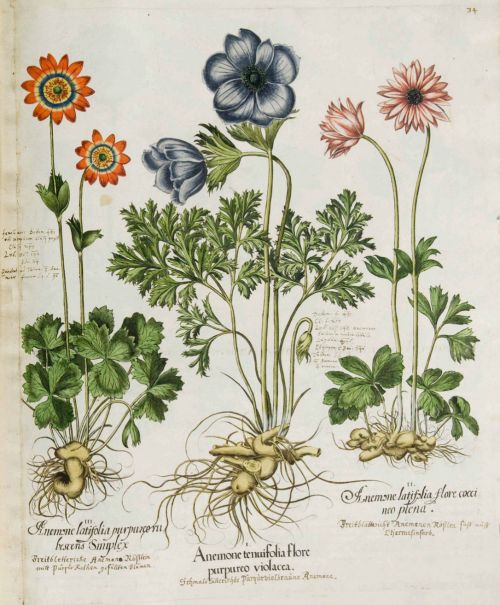1665 - Rea, John - Flora: Difference between revisions
m (Text replacement - "=== Sources ===" to "== Sources ==") |
m (Text replacement - "=== Background ===" to "== Background ==") |
||
| Line 18: | Line 18: | ||
* {{:Rea, John 1665a}}, pp. 125-26. | * {{:Rea, John 1665a}}, pp. 125-26. | ||
== Background == | |||
* [http://www.wyreforest.net/wp-content/uploads/2014/01/2012-BS-John-Rea-florist.pdf Brian Stephens: 'John Rea, Florist of Kinlet, 1605(?)-1677' (''Wyre Forest Study Group Review'', 2012)] at Wyre Forest Study Group website. | * [http://www.wyreforest.net/wp-content/uploads/2014/01/2012-BS-John-Rea-florist.pdf Brian Stephens: 'John Rea, Florist of Kinlet, 1605(?)-1677' (''Wyre Forest Study Group Review'', 2012)] at Wyre Forest Study Group website. | ||
{{AlItemAlsoSee}} | {{AlItemAlsoSee}} | ||
Revision as of 14:41, 12 July 2018

By Henrik Thiil Nielsen, 2016-06-11. Revised by Henrik Thiil Nielsen, 2018-07-12.
Allusion
Anemone latifolia vulgaris maxima versicolor.
The common great double variable broad-leaved Anemone cometh up before Winter, with many something broad leaves, cut in on the sides and folding the edges, seldome lying smooth and plain, of a fresher green colour than many of those that follow, and a little hard in handling, as all this kind are, and therefore by some called Hard-leaf; from among these leaves riseth up one two or more stalks for flowers, according to the age and bigness of the roots, having about the middle of them some jaged [sic] leaves, as all the Anemones have; at the top of the stalks the flowers come forth, which are [p. 126:] large and double, consisting of many narrow long sharp-pointed leaves, the out-most whereof are broadest and green, with some stripes of Orenge-tawny, the inner leaves are smaller, less striped with green, and the middle leaves being wholly Orenge-tawny, turning inward, cover the head or button which is usual in the middle of the flowers of most of this kind; the root is tuberous, large and thick, of a blackish colour of the outside, and yellowish within: this common Anemone is by many Gentlewomen, and other as ignorant, called Robin Hood, Scarlet and John, and the Spanish marigold; there are two kinds thereof, the flowers of the one being more double and less green than the other.[1]
IRHB comments
IRHB's brackets in quotation.
Lists
- Not included in Dobson, R. B., ed.; Taylor, J., ed. Rymes of Robyn Hood: an Introduction to the English Outlaw (London, 1976), pp. 315-19.
- Outside scope of Sussex, Lucy, compil. 'References to Robin Hood up to 1600', in: Knight, Stephen. Robin Hood: A Complete Study of the English Outlaw (Oxford, UK; Cambridge, Massachusetts: Blackwell, 1994), pp. 262-88.
Sources
Background
- Brian Stephens: 'John Rea, Florist of Kinlet, 1605(?)-1677' (Wyre Forest Study Group Review, 2012) at Wyre Forest Study Group website.
Notes
